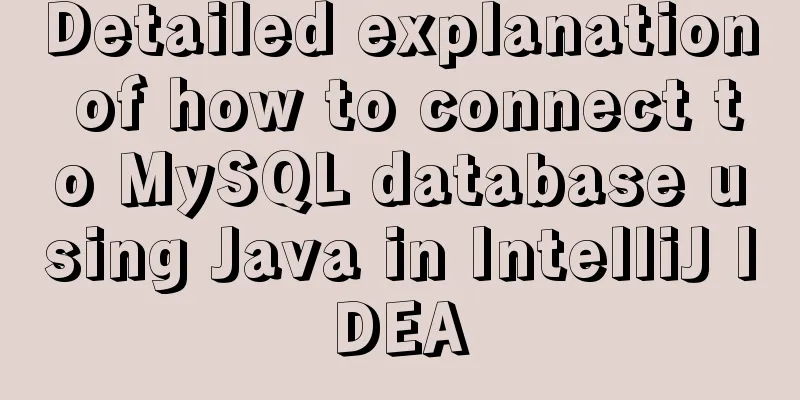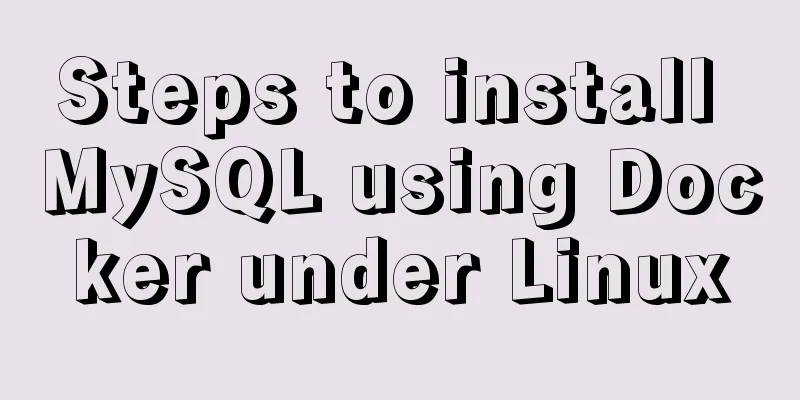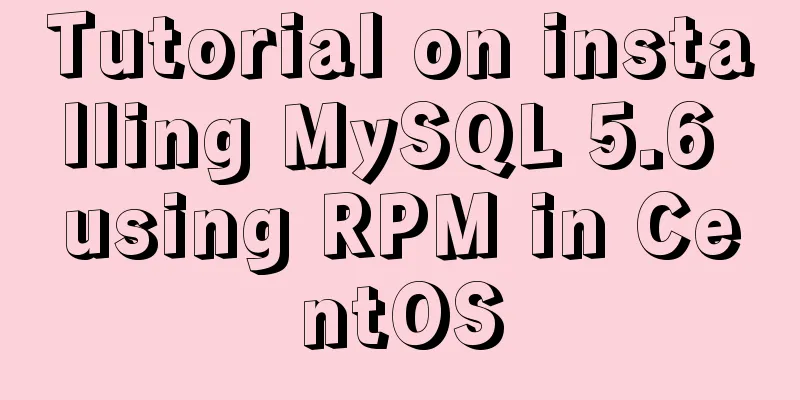Tutorial on installing MySQL under Linux

|
Preface: The previous article introduced the MySQL installation tutorial under Windows in detail. This article starts with the most basic installation of 1. Delete the old version Check whether the server has built-in
2. Check the server kernel type, download the appropriate version and upload it to the server2.1. Use cat /proc/version to view the kernel type of the system
2.2. Download the appropriate type from the official website
2.3. Upload to the server via rz command or xftp tool
Command: rz or rz -be Format: rz -be Select the file to upload Upload files in batches or individually through the ZMODEM protocol. In addition, you can also upload via ftp or sftp
3. Unzip and install the corresponding components step by step3.1. Decompression command
3.2. Install component command: rpm -ivh component name to be installedFollow the following command sequence and change the file name to the name of the compressed file. //mysql-community-common 1. rpm -ivh mysql-community-common-8.0.16-2.el7.x86_64.rpm //mysql-community-libs 2. rpm -ivh mysql-community-libs-8.0.16-2.el7.x86_64.rpm --force --nodeps //mysql-community-libs-compat 3. rpm -ivh mysql-community-libs-compat-8.0.16-2.el7.x86_64.rpm //mysql-community-client 4. rpm -ivh mysql-community-client-8.0.16-2.el7.x86_64.rpm --force --nodeps //mysql-community-server 5. rpm -ivh mysql-community-server-8.0.16-2.el7.x86_64.rpm --force --nodeps // View installed components 6. rpm -qa | grep mysql
3.3. Start the MySQL server. If an error occurs, proceed to step 4. Start command: 3.4. If the following error is reported during startup, perform the corresponding steps to repair it
The explanation is that there is a conflict between the new version and the previous version of the server. Just delete the corresponding conflicting directory and execute: rm -rf /var/lib/mysql/* (be careful when executing the deletion command)
3.5. Execute after repair is completed 4. Connect to MySQL service and change passwordThe first time you successfully start MySQL, a default password will be set. Use the following command to view and log in.
ALTER USER root@localhost IDENTIFIED WITH caching_sha2_password BY '123456'; (MySQL 8.x is suitable for this statement) UPDATE USER SET PASSWORD=PASSWORD('your password') WHERE USER='root'; (modification of MySQL 5.x version)
This is the end of this article about installing MySQL under Linux. For more information about installing MySQL under Linux, please search for previous articles on 123WORDPRESS.COM or continue to browse the following related articles. I hope you will support 123WORDPRESS.COM in the future! You may also be interested in:
|
<<: How to use display:olck/none to create a menu bar
Recommend
Analysis of the use of the MySQL database show processlist command
In actual project development, if we have a lot o...
vue-admin-template dynamic routing implementation example
Provide login and obtain user information data in...
Detailed discussion of memory and variable storage in JS
Table of contents Preface JS Magic Number Storing...
HTML implements the function of detecting input completion
Use "onInput(event)" to detect whether ...
Antdesign-vue combined with sortablejs to achieve the function of dragging and sorting two tables
Table of contents Achieve results Introduction to...
CentOS7.5 installation tutorial of MySQL
1. First check whether the system has mysql insta...
Usage and difference of Js module packaging exports require import
Table of contents 1. Commonjs exports and require...
CentOS7.x uninstall and install MySQL5.7 operation process and encoding format modification method
1. Uninstalling MySQL 5.7 1.1查看yum是否安裝過mysql cd y...
WeChat applet scroll-view implements a solution to duplicate data loading when pulling up
The scroll-view of WeChat applet has more bugs wh...
How to modify the contents of an existing Docker container
1. Docker ps lists containers 2. Docker cp copies...
Let's talk about Vue's mixin and inheritance in detail
Table of contents Preface Mixin Mixin Note (dupli...
How to modify the group to which a user belongs in Linux
Modify the group to which a user belongs in Linux...
Build a high-availability MySQL cluster with dual VIP
Table of contents 1. Project Description: 2. Proj...
How to implement Nginx configuration detection service status
1. Check whether the check status module is insta...
5 cool and practical HTML tags and attributes introduction
In fact, this is also a clickbait title, and it c...



















